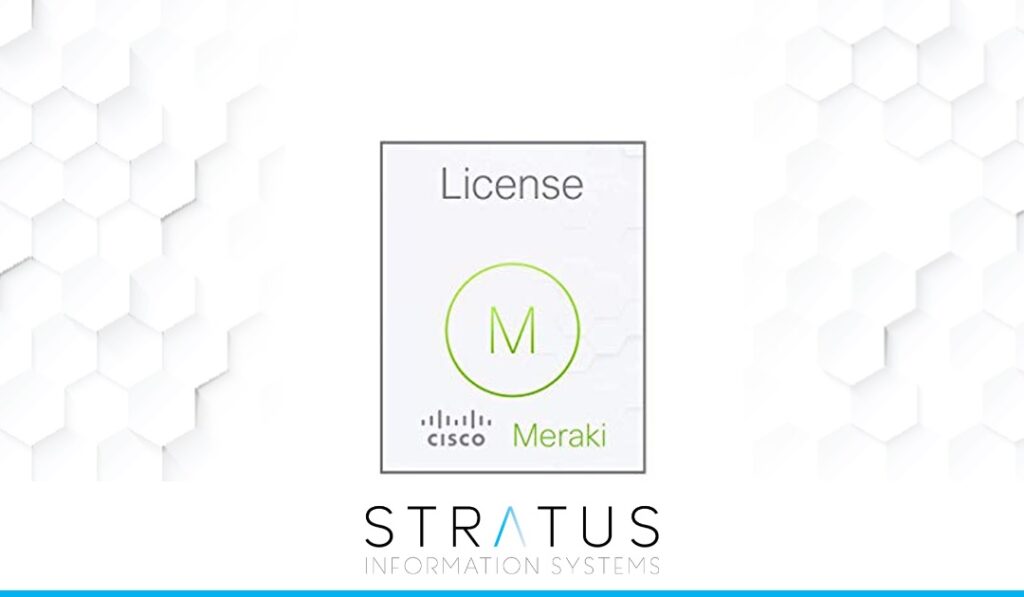
Modern organizations need efficient, scalable, and cost-effective collaboration tools to maintain productivity and communication. Cisco Flex Licensing, mainly through the Cisco Collaboration Flex Plan, has emerged as a subscription model tailored to meet the evolving needs of growing businesses. This model provides businesses with the flexibility to scale their operations, simplify cost management, and integrate cutting-edge collaboration technologies such as Webex Calling, Webex Meetings, and Unified Communications Manager. The Cisco Flex Licensing model offers a subscription-based approach, making it easier for businesses to predict costs while enabling seamless expansion as their needs evolve.
Businesses seeking a dynamic, flexible, and cost-conscious licensing model can benefit from Cisco’s focus on scalability and streamlined management. With its ability to support cloud, on-premises, and hybrid deployments, Cisco Flex Licensing is well-suited for businesses of all sizes. By leveraging Stratus Informational Systems’ expertise, companies can optimize their Cisco solutions, ensuring smooth implementation and maximum return on investment. Whether your organization is a startup or an established enterprise, Cisco Flex Licensing provides a reliable foundation for collaboration and growth. Contact Stratus Informational Systems today to discover how Cisco solutions can elevate your business operations.
Cisco Flex Licensing is an innovative subscription-based licensing model designed to provide organizations with access to Cisco’s industry-leading collaboration tools. These tools include Webex Calling, Webex Meetings, Webex Suite, and Cisco Unified Communications Manager. Unlike traditional licensing models that often require heavy upfront capital expenditures, Cisco Flex Licensing follows an operational expenditure (OpEx) model, which simplifies budgeting and reduces financial barriers to adopting advanced technologies. This model supports businesses in transitioning to cloud-based communication while accommodating hybrid and on-premises deployments to ensure seamless integration with existing infrastructure.
Cisco Flex Licensing is structured around three primary buying models, each catering to specific organizational needs. The Enterprise Agreement (EA) is ideal for large organizations with 250 or more employees, offering centralized management, predictable costs, and a 15% growth allowance to accommodate future expansion without additional charges. The Active User (AU) model is designed for organizations with fluctuating usage patterns, enabling businesses to scale Webex Meeting entitlements based on adoption rates. This model requires a minimum of 40 users, making it a cost-effective solution for growing businesses. The Named User (NU) model provides flexible licensing for teams or departments with predictable usage, starting with as few as five users. This model is well-suited for smaller organizations or divisions that need collaboration tools without committing to large-scale deployment.
Deployment flexibility is another key feature of Cisco Flex Licensing. Businesses can deploy services entirely in the cloud, maintain on-premises setups, or create hybrid environments that combine both approaches. This adaptability ensures organizations can transition to the cloud at their own pace while leveraging existing investments in on-premises infrastructure. The Webex Control Hub serves as the centralized management portal, enabling IT administrators to monitor and control user licenses, service adoption, and security settings, simplifying IT operations.
Cisco Flex Licensing is designed to meet the needs of businesses of all sizes. Its scalability ensures organizations can add or reduce licenses as their workforce grows or contracts, providing unmatched flexibility to adapt to changing demands. With its combination of cost efficiency, deployment options, and ease of management, Cisco Flex Licensing is the ideal solution for businesses looking to modernize their collaboration infrastructure.

The Cisco Collaboration Flex Plan simplifies the purchasing process by bundling essential collaboration tools into a single, easy-to-manage subscription. This approach eliminates the complexity of managing multiple licenses and reduces administrative overhead. By consolidating services such as Webex Calling, Webex Meetings, and Unified Communications Manager into one plan, businesses can streamline their procurement process while ensuring they have access to the latest features and updates.
The operational expenditure (OpEx) model of the Flex Plan provides businesses with predictable costs, enabling more accurate budgeting and financial planning. Instead of large, upfront investments, organizations can spread costs over time, preserving capital for other strategic initiatives. Furthermore, the inclusion of growth allowances in the Enterprise Agreement model provides businesses with the flexibility to scale operations without incurring additional costs, allowing them to accommodate workforce expansions or seasonal demands effortlessly.
Cisco’s Collaboration Flex Plan is designed with flexibility at its core. Businesses can choose from cloud, on-premises, or hybrid deployment options, enabling them to align the solution with their current IT infrastructure and long-term goals. Organizations can mix and match services, combining cloud-based meetings with on-premises calling or hybrid configurations to suit their needs.
The “pay-as-you-grow” model is particularly advantageous for businesses anticipating rapid growth. With a 15% growth allowance included in Enterprise Agreements, organizations can expand usage without worrying about immediate costs. This feature eliminates the need to renegotiate contracts or purchase additional licenses during the subscription term, making it easier to scale operations while maintaining cost predictability.
To support businesses with varying needs, Cisco offers three tiers of support: Basic, Enhanced, and Premium. The Basic tier provides standard support for resolving issues and addressing inquiries, while the Enhanced tier offers faster response times and additional resources for troubleshooting. The Premium tier is ideal for businesses with mission-critical operations, providing 24/7 technical assistance, proactive monitoring, and dedicated support teams.
These support options ensure businesses can maintain operational continuity and address issues quickly, minimizing downtime and optimizing user experiences. Combined with the centralized management capabilities of the Webex Control Hub, Cisco Flex Licensing delivers a comprehensive solution for managing collaboration tools effectively.
The Enterprise Agreement (EA) model is designed for larger organizations with 250 or more employees, offering an all-inclusive licensing approach that covers knowledge workers within the company. This model provides a 15% growth allowance, enabling businesses to expand their workforce without incurring additional licensing costs. EA supports multiple collaboration workloads, including Webex Calling, Meetings, and the Webex Suite, allowing businesses to bundle services for simplified management and cost savings.
A key advantage of the EA model is its centralized management through the Webex Control Hub, which enables IT administrators to monitor usage, enforce security policies, and generate adoption reports. Businesses can deploy services in the cloud, on-premises, or in hybrid environments, ensuring seamless integration with existing infrastructure. True Forward automation eliminates manual adjustments for overages, simplifying contract management and ensuring predictable costs over time.
The Active User (AU) model is tailored for businesses with fluctuating usage patterns, particularly those focusing on Webex Meetings. This usage-based subscription allows businesses to pay for licenses based on adoption rates, providing cost savings for organizations with variable usage. Subscriptions can be purchased for a minimum of 40 active users, making this model ideal for growing companies and teams with seasonal needs.
The AU model supports annual True Forward assessments to ensure businesses only pay for the licenses they actively use. This flexibility reduces the risk of overpaying for unused licenses while enabling scalability as adoption increases.
The Named User (NU) model is designed for smaller teams or departments with predictable collaboration needs. Starting with a minimum of five users, this model offers affordable access to Webex Calling and Meetings, enabling businesses to scale gradually as their workforce grows.
NU licenses can be added as needed, ensuring organizations have the flexibility to expand services without committing to larger licensing agreements. This model is particularly well-suited for teams with defined roles and consistent usage patterns, providing cost-effective access to Cisco’s collaboration tools.
One of the most significant advantages of Cisco Flex Licensing is its cost-saving potential, particularly through bundled solutions. Businesses can consolidate their collaboration needs, including calling, messaging, and meetings, into a single package rather than purchasing these services separately. This bundled approach not only reduces administrative overhead but also enables businesses to achieve savings of over 20% compared to traditional licensing models.
Additionally, the operational expenditure (OpEx) pricing model eliminates the need for large upfront investments, making it easier for businesses to allocate budgets effectively. By spreading costs across predictable subscription payments, organizations can invest in other growth initiatives without compromising their IT infrastructure. The inclusion of growth allowances, particularly in the Enterprise Agreement model, further enhances cost-efficiency by enabling businesses to scale their usage without incurring immediate additional expenses. This flexibility makes Cisco Flex Licensing an ideal choice for businesses looking to optimize resources without sacrificing functionality.
Cisco Flex Licensing delivers a seamless and unified user experience across devices and platforms. Whether employees are working in the office, remotely, or in a hybrid setup, Cisco’s collaboration tools—such as Webex Calling, Webex Meetings, and Webex Teams—ensure consistent communication and collaboration. The Webex Suite integrates messaging, video conferencing, and calling, enabling teams to stay connected regardless of location.
Moreover, Cisco’s platform offers advanced features like AI-powered meeting assistants, transcription services, and real-time translation, enhancing productivity and inclusivity. These capabilities streamline workflows, reduce time spent on repetitive tasks, and improve overall efficiency. With centralized management through the Webex Control Hub, IT administrators can easily configure settings, monitor performance, and enforce security policies, ensuring a smooth experience for end-users.
Managing collaboration tools across large teams and multiple locations can be challenging. Cisco Flex Licensing simplifies this process with the Webex Control Hub, which acts as a centralized management portal. From provisioning new users to monitoring usage and generating reports, the Control Hub provides IT administrators with complete visibility and control over their organization’s collaboration infrastructure.
The Control Hub’s intuitive interface allows businesses to enforce security policies, monitor compliance, and detect potential issues before they escalate. Features like analytics and reporting provide insights into adoption rates, helping organizations optimize usage and improve ROI. Additionally, the True Forward process automates license adjustments based on actual usage, reducing manual administrative tasks and ensuring accurate billing. This streamlined approach makes Cisco Flex Licensing a practical and efficient choice for IT teams tasked with managing complex deployments.
Traditional licensing models often involve large upfront costs, complex renewal processes, and limited scalability. Cisco Flex Licensing addresses these challenges with its subscription-based model, offering predictable costs and the ability to scale as needed. Unlike traditional approaches that require manual license updates, Cisco’s True Forward process automates adjustments, reducing administrative overhead and billing errors.
Another key difference is the flexibility of deployment. Traditional licensing often ties businesses to a specific infrastructure, whereas Cisco Flex Licensing supports cloud, on-premises, and hybrid setups. This adaptability makes it easier for businesses to transition to the cloud at their own pace, minimizing disruptions and preserving existing investments.
Cisco Flex Licensing stands out from competitors by offering a more comprehensive and scalable solution. While other providers may offer limited flexibility, Cisco’s ability to mix and match deployment models ensures organizations can tailor their approach to fit their specific needs. The inclusion of growth allowances and bundled services further enhances cost-efficiency, providing businesses with more value for their investment.
Moreover, Cisco’s integration capabilities set it apart. With features like AI-driven meeting assistants, seamless integration with third-party applications, and robust security measures, Cisco Flex Licensing delivers a richer user experience. Competitors often lack the breadth of tools and integrations provided by Cisco, making it the preferred choice for businesses prioritizing collaboration and security.

Cisco Flex Licensing’s subscription-based OpEx model provides businesses with predictable costs, enabling accurate budgeting and financial planning. Unlike CapEx models that require significant upfront investments, the OpEx approach spreads expenses over time, aligning with operational budgets and reducing financial strain.
For organizations experiencing growth, the Enterprise Agreement’s 15% growth allowance offers additional savings by allowing businesses to expand their workforce without immediate costs. This flexibility ensures that businesses can adapt to changing demands without renegotiating contracts or purchasing new licenses, further enhancing cost predictability.
Cisco Flex Licensing offers significant cost savings by bundling calling, messaging, and meetings into a single subscription. Businesses can save over 20% compared to purchasing these services individually, reducing both licensing and administrative costs.
Additionally, businesses benefit from regular updates and new features included in the subscription, eliminating the need for costly upgrades or add-ons. This ensures organizations always have access to the latest tools and technologies, maintaining competitiveness without additional expenses.
For businesses with dynamic growth patterns, Cisco Flex Licensing provides scalability without added complexity. The Enterprise Agreement model includes a 15% growth allowance, enabling businesses to add users and licenses as needed without immediate costs. This flexibility supports seasonal demands, workforce expansion, and evolving collaboration needs.
With these features, Cisco Flex Licensing ensures businesses can scale operations efficiently while maintaining budget control, making it an ideal choice for organizations focused on growth and adaptability.
Choosing the right Cisco Collaboration Flex Plan requires a thorough assessment of your organization’s collaboration needs, workforce size, and growth projections. Businesses should start by evaluating their current communication tools and identifying gaps or inefficiencies. For instance, companies with a large workforce spread across multiple locations may prioritize cloud solutions for seamless remote collaboration. On the other hand, organizations with existing on-premises infrastructure might benefit from hybrid deployment options to preserve prior investments.
Key considerations include evaluating the number of employees requiring collaboration tools, anticipated growth in headcount, and the need for advanced features like AI-driven assistants, transcription, or enhanced security protocols. Businesses should also assess seasonal fluctuations in collaboration demands to determine whether a scalable plan, such as the Active User model, is a better fit than a fixed Enterprise Agreement. Additionally, evaluating administrative capacity is crucial, as organizations with limited IT resources may prefer Cisco Flex Licensing’s centralized management through Webex Control Hub for simplified administration.
After assessing organizational needs, businesses should map their requirements to the features offered by each Cisco Collaboration Flex Plan model. The Enterprise Agreement (EA) model is ideal for larger organizations that need fixed pricing, scalability, and centralized management across multiple locations. It includes growth allowances of up to 15%, providing built-in flexibility for scaling operations without incurring immediate costs.
The Active User (AU) model is better suited for businesses with fluctuating usage patterns, such as event-driven organizations or seasonal teams. This model allows companies to scale licenses based on adoption rates, providing cost savings by eliminating unused licenses. Finally, the Named User (NU) model is perfect for small teams or departments with predictable usage patterns. It offers an affordable entry point while enabling businesses to expand gradually as their needs evolve.
Matching organizational requirements with these features ensures businesses invest in the most suitable plan, optimizing both costs and productivity. It is also essential to review available support tiers—Basic, Enhanced, or Premium—and select the level of assistance needed to maintain smooth operations.
Navigating the array of options within Cisco Flex Licensing can be complex, especially for businesses new to subscription-based licensing models. Leveraging expert guidance from trusted Cisco partners like Stratus Informational Systems can simplify the selection process. Experienced consultants can conduct in-depth assessments, recommend suitable plans, and assist with deployment to ensure seamless implementation.
Stratus Informational Systems specializes in Cisco solutions, providing businesses with tailored strategies to align licensing plans with organizational goals. From initial planning to ongoing support, expert guidance can help companies maximize their return on investment and avoid common pitfalls in deployment and management. Contact Stratus Informational Systems today for a personalized consultation and discover how Cisco Flex Licensing plans can transform your collaboration infrastructure.
Cisco Flex Licensing, powered by the Cisco Collaboration Flex Plan, offers businesses a scalable, cost-effective, and feature-rich solution for modern collaboration. With flexible deployment options, predictable pricing, and centralized management, Cisco Flex plans provide organizations with the tools to support growth and efficiency.
By consolidating calling, messaging, and meetings into a single subscription, businesses can reduce costs, streamline operations, and enhance user experiences. Whether adopting the Enterprise Agreement for large-scale deployments, the Active User model for fluctuating demands, or the Named User model for small teams, Cisco Flex Licensing delivers unmatched flexibility and value.
Stratus Informational Systems is a trusted partner for businesses looking to implement Cisco Flex Licensing. Our expertise ensures smooth deployment, ongoing support, and customized strategies to maximize ROI. Contact Stratus today to learn more about Cisco Flex Licensing and how it can transform your business collaboration capabilities.

Stay informed about our newest releases and updates